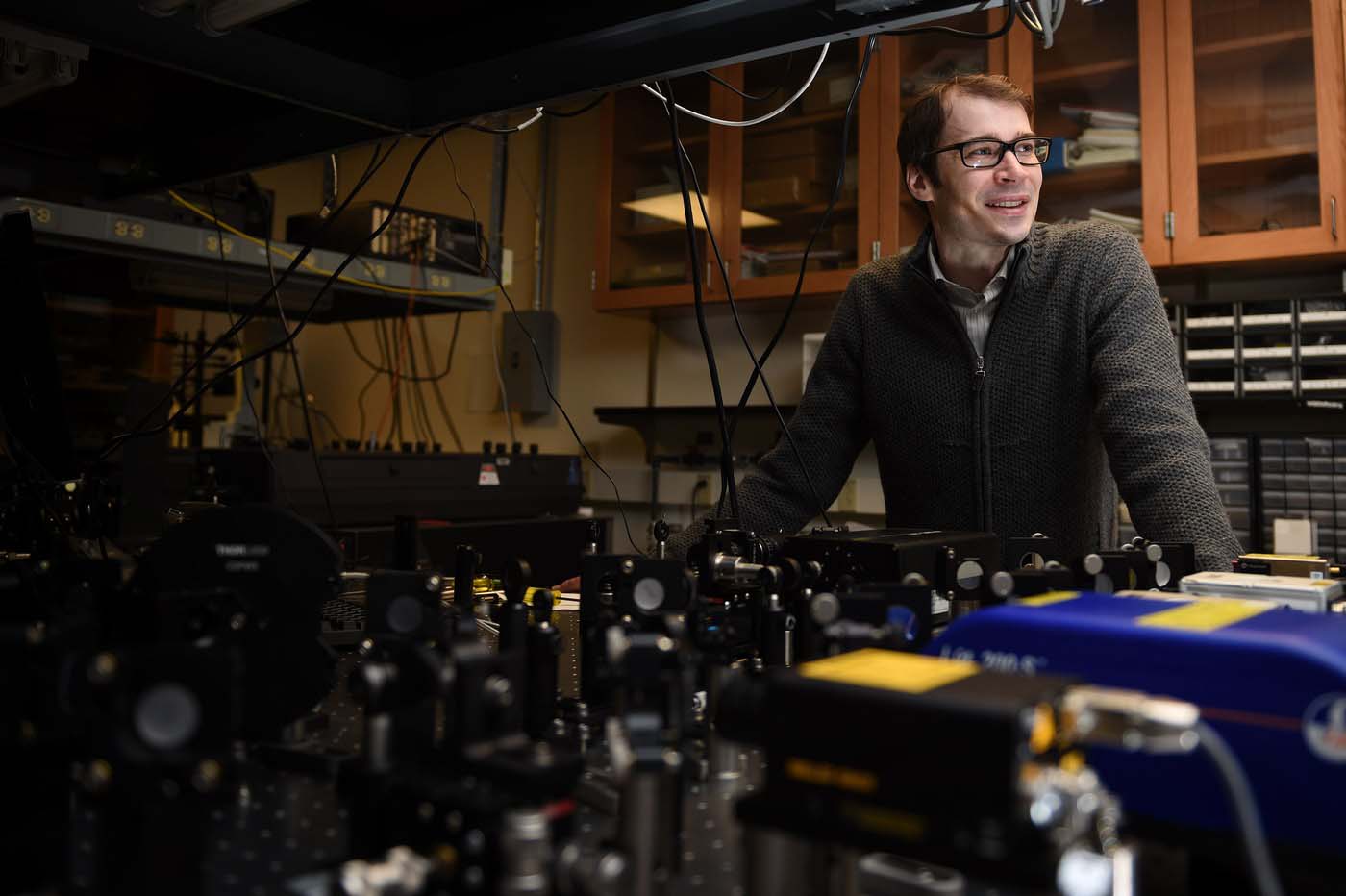by Thea Singer
Pancreatic cancer is a notoriously treatment-resistant disease. Assistant professor Bryan Q. Spring develops photodynamic light-based therapies that both target the malignant cells and stop the signaling between them that sparks new tumor growth. It’s a novel one-two punch approach to personalized medicine.
“With difficult malignancies like pancreatic cancer, you can never kill all the cancer cells with a single cycle of treatment,” says Spring, who joined Northeastern’s Department of Physics in the College of Science this past fall. “The surviving cells are able to mount a response—they communicate with one another so they can keep growing, develop resistance to the drugs, and thwart the immune system.”
In his latest paper, Spring and his colleagues—in a preclinical study conducted in the laboratory of Tayyaba Hasan at Massachusetts General Hospital—combined two complementary anti-cancer drugs. The first drug, a nontoxic chemical, which was activated using light, directly damaged the tumor cells and the blood vessels feeding them. The second drug, a toxic chemical released by that light, “mopped up” the remaining cells’ lines of communication, halting regrowth. The study was published in Nature Nanotechnologylast month.
The dual approach not only shrank the tumors by 60 to 90 percent in a single cycle but also suppressed metastasis and limited damage to healthy surrounding tissue. In addition, it reduced the dosage of the toxic second drug, says Spring, by “a thousand times or more” compared to its use alone.
Let there be light
Photomedicine—using light to bring about healing—inspires Spring, who worked under Hasan, a pioneer in photodynamic therapy, as a postdoc. His lab team at Northeastern will draw from biophysics, biomedical optics and cancer biology to build optical imaging systems. These systems, he says, are “essentially miniature microscopes” that you can insert into the body to visualize the proteins, or “molecular targets,” sitting on individual cancer cells. Knowing the specific proteins on each cell guides the use of targeted therapies and enables customized cancer treatments, just as knowing what bacterium causes an infection enables customized antibiotic treatment.
Photodynamic therapy uses optical-imaging systems in a variety of ways. In their new study, for example, the researchers combined the therapy with a unique light-activated drug-delivery process to fight advanced pancreatic cancer in mice. The approach could be used against other treatment-resistant cancers as well.
A crossing of disciplines
To start, they developed a nanostructure—an infinitesimally small structure made of fats—to house the two complementary anti-cancer drugs. They loaded the nontoxic one in the shell and the toxic “mopping up” one in the core, and then delivered the packed nanostructure intravenously.
The nontoxic drug loaded in the shell made its way inside the tumor. Using optical fibers, Spring trained near-infrared light on the tumor, which triggered the embedded drug to spew out reactive molecules that killed many of the cancer cells and cut off their blood supply.
Without the second drug, however, the battle may have been lost. That’s because in photodynamic therapy within minutes the reactive molecules also stimulate a flurry of communication among the remaining cancer cells as they struggle to survive. In fact, these unwanted tumor-cell communications promote resistance to virtually all modes of cancer therapy.
Once again, Spring’s light came to the rescue: With impeccable timing, the light broke down the shell of the nanostructure, releasing the toxic drug from its core to strike at the communication pathways.
Crossing boundaries like these, in order to merge basic science with clinical applications, is what drew Spring to Northeastern. “There is a great deal of infectious enthusiasm and energy at Northeastern to expand interdisciplinary research,” he says. “The strong biological and medical physics programs here are a natural fit for me. Those, combined with the nanomedicine, biomedical optics, and bioengineering programs, promise untold research opportunities.”
Originally published in news@Northeastern on February 11, 2016

